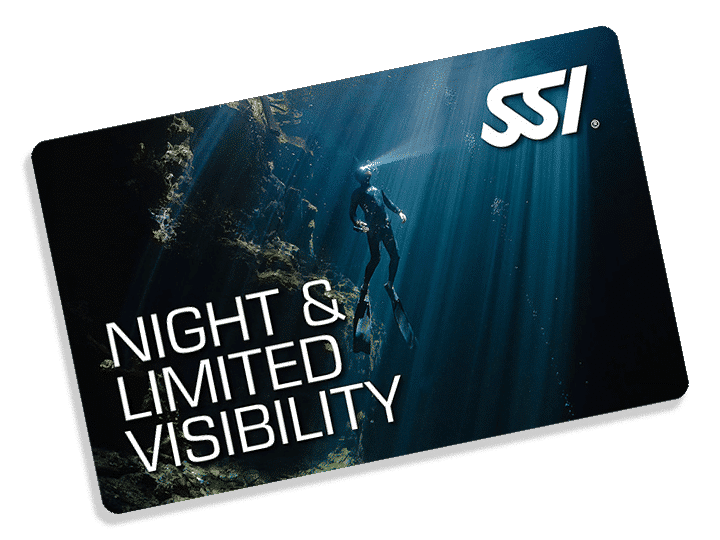Night and Limited Visibility
It’s magical after dark

■ One morning or evening in the classroom and pool
■ Open watyer dives with specific skills required for certification
The details
- (Contact store)
Classes require a minimum of three people to run as scheduled. If fewer than three people sign up, we reserve the right to either cancel the class or impose a $100 surcharge.
Please be aware that, while we make every effort to keep our listings accurate and up to date, you should always call the store to confirm starting dates and times.
■ Be at least 12 years old
■ Open Water Diver certification
■ Completed medical history form
$250/person includes:
- All academic and confined-water instruction
- Self-study materials
- Private instruction available at an additional cost
You must still complete two or more open-water training dives for certification. These are $100 each.
You supply:
- Swimsuit, towel
- Mask, snorkel, scuba fins, boots
- Weight system, weights
- Adequate exposure protection
- One cylinder
- Buoyancy Control Device (BC)
- Regulator/alternate air source
- Dive light
- SMB with overpressure valve, reel
- Audible surface signal, knife/cutting tool
Items other than mask/snorkel/fins may be available for rental
Students are also responsible for:
- All air or gas fills
- Dive site admission or charter fees
- Transportation to and from dive sites
- Accommodations and meals, as needed
Plastic, photo-ID certification card, if desired (digital card provided at no charge)
While having great visibility and broad daylight is always desirable, it’s foolish to limit your diving to times and places where it exists. Night diving is different from limited visibility diving because with a good dive light, night diving is only limited in visibility by the quality of the dive light being used. Since other divers cannot see unless they are looking, you will learn the basic dive light signals and the minimum equipment to be worn.
The world underwater as you know it in daylight becomes a totally different world at night: Lobsters, octopi, eels, shrimp, crabs, bio-luminescence and more. Colors are more brilliant at night than when competing with sunlight during the day. It’s a whole different world at night. Lessons of experience:
■ Light sticks are no longer acceptable for night diving.
■ The use of a buddy line between is often helpful.
■ The planning process is more critical than for regular dives.
■ Sticking with the dive as planned is crucial.
■ Know where all your equipment is at all times.
■ Be able to set up your equipment in the relative dark.
■ Comfort and good buoyancy control are paramount.
■ Most any dive can become a limited visibility dive when/if another diver kicks up the sand or mud.
Our pool is uniquely equipped to make this course interesting and fun. We get students acclimated, then turn off the lights. The result is a realistic simulation of actual Limited Visibility/Night Diving conditions.
Ask a question
Use this form to ask us about this specific course — or you can simply stop by the store or call (504) 888-4882
